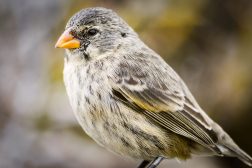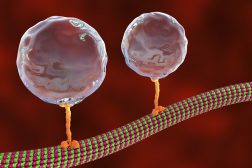Definition
noun
(cytogenetics) A chromosome staining technique that employs Giemsa stain in order to produce a characteristic banding pattern in individual chromosomes
Supplement
Giemsa banding or G-banding is a banding technique that cytogeneticists employ in order to produce a banding pattern in individual chromosome. Cytogeneticists use banding techniques to determine the characteristic pattern of light and dark bands on a chromosome under a microscope. They make use of diagrams referred to as chromosome ideograms to determine the relative sizes and the banding patterns of chromosomes. By applying specific stains, the banding patterns become apparent. Other types of banding are reverse (R-) banding, constitutive heterochromatin (C-) banding, quinacrine (Q-) banding, Nucleolar Organizer Region (NOR-) banding, and telomeric R (T-) banding.
G-banding is derived from the name of the stain that it employs. Giemsa stain is a compound of methylene blue-eosin and methylene blue. G-banding utilizes acetic acid fixation, air drying, denaturing chromosomes mildly with proteolytic enzymes, salts, heat, detergents, or urea, and finally giemsa stain. Chromosome bands appear similar to those fluorochromed by Q-banding stain. G-banding produces a series of light and dark bands. Regions in the chromosome that stain rather lightly with G-banding tend to be more transcriptionally active, euchromatic, and rich with guanine and cytosine. In contrast, the chromosomal regions that stain darkly tend to be less transcriptionally active, heterochromatic, and rich with adenine and thymine.
C-banding also makes use of Giemsa stain that binds to constitutive heterochromatin. This technique produces a banding pattern in the heterochromatin of the centromeric regions.
Abbreviation / Acronym:
- G-banding
- G banding
See also:







